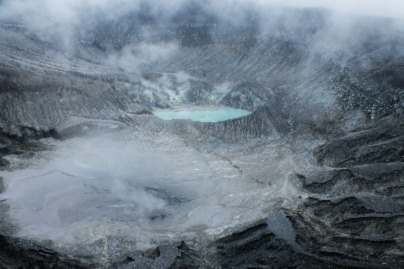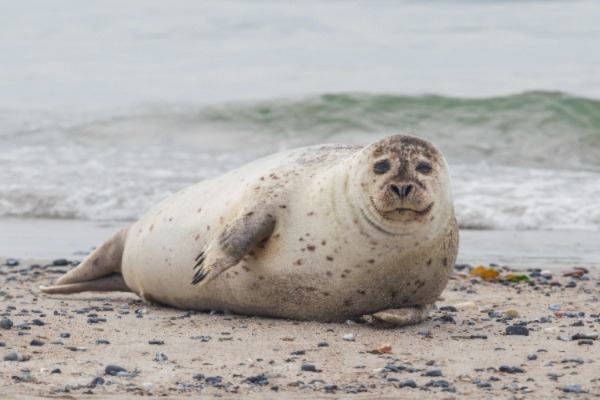A world of extremes: new microbes discovered in hot, cold, salty and sulphurous habitats
Posted on November 3, 2022 by Charlotte Hartley
Each month, the Microbiology Society publishes the International Journal of Systematic and Evolutionary Microbiology, which details newly discovered species of bacteria, fungi and protists. Here are some of the new species that have been discovered and the places they've been found.
In this month’s New to Science blog we dive head first into the extreme. First up, so-called ‘black fungi’ are known for their ability to colonise a wide range of unusual and sometimes hostile niches. It is perhaps unsurprising then that two new species of black fungus, belonging to the genus Knufia, were recently isolated from various extreme environments. The first, Knufia obscura, was discovered in the petrol tank of a car, as well as living alongside marine algae on an island off the coast of Italy. The second species, Knufia victoriae, was found in a far colder habitat and named after its place of discovery: the Victoria Land region in Antarctica.
From one temperature extreme to another, our next new microbe thrives in much warmer conditions than Knufia victoriae. In Java, Indonesia, a novel species of archaea was isolated from a hot volcanic pool. This unforgiving environment is seemingly no challenge for Metallosphaera javensis, which can grow at a very acidic pH and at temperatures as high as 78oC. It even takes advantage of the volcanic fumes by obtaining its energy from sulphur or sulphur-containing compounds.

Two more new species of archaea feature this month. Haladaptatus halobius and Haladaptatus salinisoli are well-adapted to the high salinity of the Gobi desert soil. The two novel species, isolated from the Tarim Basin in the People’s Republic of China, are both non-motile and grow in white, round colonies.
Elsewhere, we find more novel microbes living in salty surroundings. Pseudalkalibacillus salsuginis is a novel bacterium isolated from a saline lake sediment in China’s autonomous Xinghiang Uygyr region. Pseudalkalibacillus is a relatively new genus, which has been found in a range of habitats including sea urchins, brown algae, mangrove sediments and a gold mine. Another three new bacterial species were found in salt lakes high up in the Tibetan Plateau. All belong to the genus Psychroflexus, which has been found in numerous high-salt habitats including tidal flats and even on a type of cheese.
Nearby, researchers discovered more novel bacteria while investigating the intestinal contents of a Himalayan marmot. From six unknown strains, the team identified three novel species: Cellulomonas dongxiuzhuiae, Cellulomonas wangleii. and Cellulomonas fengjieae.
Also discovered hiding in an unsuspecting animal, Arcanobacterium buesumense was isolated from an anal swab of a male harbour seal, found dead off the coast of Germany. Testing revealed that the novel bacterium was susceptible to almost all of 43 antibiotics tested, but showed a concerning tendency for resistance against the antibiotic ciprofloxacin, which is used to treat various infections including certain types of diarrhoea and urinary tract infections.

Finally, we journey to the Gerum River in the Republic of Korea, where a riverside soil sample revealed two new species of actinobacteria. Micromonospora antibiotica and Micromonospora humidisoli both demonstrated antimicrobial activity against a broad range of other microbes – in particular against Gram-positive bacteria and yeasts. The researchers believe it is likely that these two new species could be the source of previously unidentified antibacterial compounds, which could one day be utilised to treat bacterial infections.
